Authors
Chin-Hao Huang

Chin-Hao Huang is assistant professor of political science at Yale-NUS College. Prior to this, he served as researcher at the Stockholm International Peace Research Institute (SIPRI) in Sweden, and at the Center for Strategic and International Studies (CSIS) in Washington, DC. He specializes in international politics, especially with regard to China and the Asia-Pacific region. Huang is the recipient of the American Political Science Association (APSA) Foreign Policy Section Best Paper Award (2014) for his research on China’s compliance behavior in multilateral security institutions. His publications have appeared in The China Quarterly, The China Journal, International Peacekeeping, and in edited volumes through Oxford University Press and Routledge, among others. He has testified and presented on China’s foreign affairs before the US-China Economic and Security Review Commission, and has also served as a consultant for US and European foundations, governments, and companies on their strategies and policies in Asia. He received his Ph.D. in political science from the University of Southern California and B.S. with honors from Georgetown University.
Articles by Chin-Hao Huang

China - Southeast Asia
September — December 2023Beijing Moderates Criticisms Selectively
Beijing in this reporting period moderated often shrill rhetoric of the past two years criticizing Joseph Biden administration advances and regional governments cooperating with the US. Emphasizing China’s positive contributions to regional economic growth, Beijing stressed its flexibility, said to be different from Washington in not pressing regional states to choose between the US and China, even as it demonstrated ambitions to develop a new regional and global order favorable to itself. Nevertheless, glaring exceptions included egregious pressures to compel deference to China’s claims in the South China Sea, harsh criticism of the Philippines and Japan cooperating closely with the United States, as well as authoritative foreign policy statements giving regional governments little choice between two paths forward: cooperation with an avowedly beneficial China or America’s purported exploitative, divisive and destructive initiatives. Regarding the Philippines, an unprecedented show of support by the US for the territorial claims of its treaty ally resulted in an equally unprecedented pushback from Beijing.
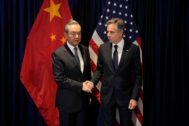
China’s recently recognized position as Southeast Asia’s leading power faces growing challenges from efforts of the Biden administration to counter Chinese ambitions and advance US regional influence. Beijing has stuck to practices of strong diplomatic engagement, economic enticement, and a range of coercive measures that have been broadly successful in the past but seem to have failed badly in the Philippines, now moving into the US orbit.
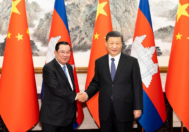
China - Southeast Asia
January — April 2023China Strengthens Regional Leadership Countering US Challenges
Southeast Asia featured prominently in Beijing’s increasingly strong international efforts to portray China as a source of strategic stability and economic growth with comprehensive global governance plans supportive of interests of developing countries and opposing the United States. These efforts intensified after the landmark 20th Party Congress in October and the 14th National People’s Congress in March. They were reinforced as Xi Jinping emerged from COVID restrictions and preoccupation with domestic matters to engage actively in summitry with leaders of Vietnam, Laos, the Philippines, Cambodia, Malaysia, and Singapore. China’s economic importance for regional countries grew as did its dominance over the contested South China Sea. Its show of force against Taiwan in April had little discernible impact on China-Southeast Asia relations, while notable US advances in military cooperation with the Philippines warranted Chinese warnings that escalated during the reporting period.
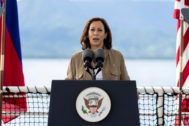
China - Southeast Asia
September — December 2022Xi Moderates to US and Others Amid Continued Competition
Southeast Asia was the center of international attention in November as regional and global leaders gathered at the G20 conference in Indonesia, which took place between the annual ASEAN-hosted summit meetings in Cambodia and the yearly APEC leaders meeting in Thailand. Acute China-US rivalry loomed large in media and other forecasts, warning of a clash of US-Chinese leaders with negative implications feared in Southeast Asia and elsewhere. The positive outcome of the Biden-Xi summit at the G20 conference and related actions eased tensions, which was welcomed, particularly in Southeast Asia, but the implications for the US and allies’ competition with China remain to be seen. Tensions over disputes in the South China Sea continued unabated. President Xi Jinping made his first trip to a major international gathering at the G20 conference followed by the APEC meeting after more than two years of self-imposed isolation in line with his government’s strict COVID-19 restrictions.
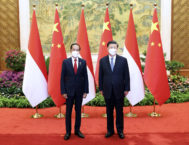
China - Southeast Asia
May — August 2022Countering US Initiatives, Taiwan Crisis Complications
Chinese enhanced activism in Southeast Asia in this reporting period focused on countering Biden administration efforts to enhance influence in the Indo-Pacific. The Chinese government intensified its depiction of the United States as disrupting regional order and portraying itself as the regional stabilizer. Beijing’s effort faced complications and uncertain prospects as Chinese military forces in August launched large-scale provocative shows of force amid strident media warnings targeting the United States over Taiwan.
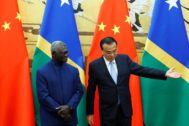
China - Southeast Asia
January — April 2022Diminished Priority As Ukraine Distracts America
Southeast Asia stopped being China’s high priority as Beijing viewed US initiatives to compete with China in the region as flagging amid preoccupation with the war in Ukraine. Chinese diplomacy added to the reasons Southeast Asian governments generally eschewed support for US-backed sanctions against Russia and carefully avoided major controversy in UN votes on the Russia-Ukraine conflict. A Chinese-Solomon Islands security deal resulted in more US and allied attention to the Pacific Islands than ever before, surpassing rare past instances of concern over interventions by the Soviet Union, Libya’s Muammar Gaddafi, and others in an area usually considered of low strategic importance.
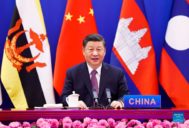
China - Southeast Asia
September — December 2021China’s Growing Influence Overshadows US Initiatives
Beijing’s extraordinary high-level attention to Southeast Asia since last year continued in the current reporting period. It culminated in President Xi Jinping presiding over a special summit he convened to commemorate the 30th anniversary of ASEAN-China dialogue on Nov. 22, which featured an array of Chinese advances. Keenly attentive to US efforts to reverse its recent decline and compete more effectively with China in Southeast Asia, Beijing has relied on ever-expanding Chinese influence in Southeast Asia to eclipse and offset US initiatives. Beijing faced a setback when Philippines President Rodrigo Duterte sharply rebuked Chinese coercion in the disputed South China Sea during the November summit. Similarly, China’s role in the political turmoil in Myanmar got noticeable pushback from ASEAN leaders as the humanitarian situation in Myanmar remains unstable.
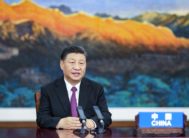
China - Southeast Asia
May — August 2021Pushing Regional Advantages Amid Heightened US Rivalry
China’s recognition of the strategic challenge posed by close Biden administration relations with the Quadrilateral Security Dialogue (Quad) powers Australia, India, and Japan reinforced Beijing’s strong efforts to preserve and expand its advantageous position in Southeast Asia in the face of rising competition with the United States. Beijing used uniformly critical coverage of US withdrawal from Afghanistan to highlight US unreliability, and attempted to discredit Vice President Kamala Harris’ Aug. 22-26 visit to the region, the highpoint of Biden government engagement with Southeast Asia. It also widely publicized evidence of China’s influence in the competition with the United States in Southeast Asia, even among governments long wary of China, like Vietnam. That effort underlined the lengths Vietnam would go to avoid offending China in reporting that Hanoi allowed the Chinese ambassador to publicly meet the Vietnamese prime minister and donate vaccines, upstaging Vice President Harris, who hours later began her visit and offered vaccines.
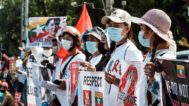
ROUNDTABLE
June 14, 2021ASEAN Centrality after the Myanmar Coup

China - Southeast Asia
January — April 2021Beijing’s Advances Complicated by Myanmar Coup and US Resolve
Beijing confidently forecast continued advances in high-priority efforts promoting regional economic integration, ASEAN’s prominence as China’s leading trade partner, as well as strengthening supply chain connections disrupted by the pandemic and US trade and economic restrictions. Ever-closer cooperation to counter COVID-19 saw Chinese pledges add to its leading position providing more than 60% of international vaccines to Southeast Asian countries. Nevertheless, the unexpected coup and protracted crisis in Myanmar headed the list of important complications. The incoming Biden administration showed no letup in US-led military challenges to China’s expansionism in the South China Sea, while strong high-level US government support for the Philippines in the face of China’s latest coercive moves supported Manila’s unusually vocal protests against the Chinese actions. Beijing also had difficulty countering Biden’s strong emphasis on close collaboration with allies and partners, seen notably in the first QUAD summit resulting in a major initiative to provide 1 billion doses of COVID vaccines for Southeast Asia and nearby areas. The effectiveness of Chinese vaccines was now questioned by Chinese as well as foreign specialists and Beijing’s domestic demand was growing strongly, slowing donations and sales abroad.